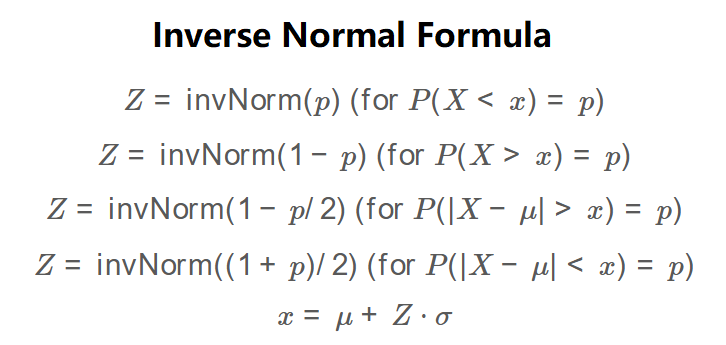 Home
Home
 Back
Back

Definition: The Inverse Normal Distribution Calculator computes the x-value and Z-score for a given probability in a normal distribution, based on the specified tail area, mean, and standard deviation.
Purpose: This tool helps users determine the value of a random variable corresponding to a specific probability, useful in statistical analysis, quality control, and risk assessment.
The calculator uses the following formulas:
\( Z = \text{invNorm}(p) \text{ (for } P(X < x) = p\text{)} \)
\( Z = \text{invNorm}(1 - p) \text{ (for } P(X > x) = p\text{)} \)
\( Z = \text{invNorm}(1 - p/2) \text{ (for } P(|X - \mu| > x) = p\text{)} \)
\( Z = \text{invNorm}((1 + p)/2) \text{ (for } P(|X - \mu| < x) = p\text{)} \)
\( x = \mu + Z \cdot \sigma \)
Where:
Steps:
Calculating the inverse normal distribution is essential for:
Example: Calculate the x-value for a normal distribution with mean 100, standard deviation 0.00001, where \( P(X < x) = 0.00001 \):
Q: What is the inverse normal distribution?
A: The inverse normal distribution finds the x-value for a given probability in a normal distribution, useful for determining thresholds or critical values.
Q: What is a Z-score?
A: A Z-score measures how many standard deviations a value is from the mean in a normal distribution.
Q: When should I use this calculator?
A: Use it when you know a probability and need the corresponding x-value, such as in statistical testing, quality control, or risk analysis.